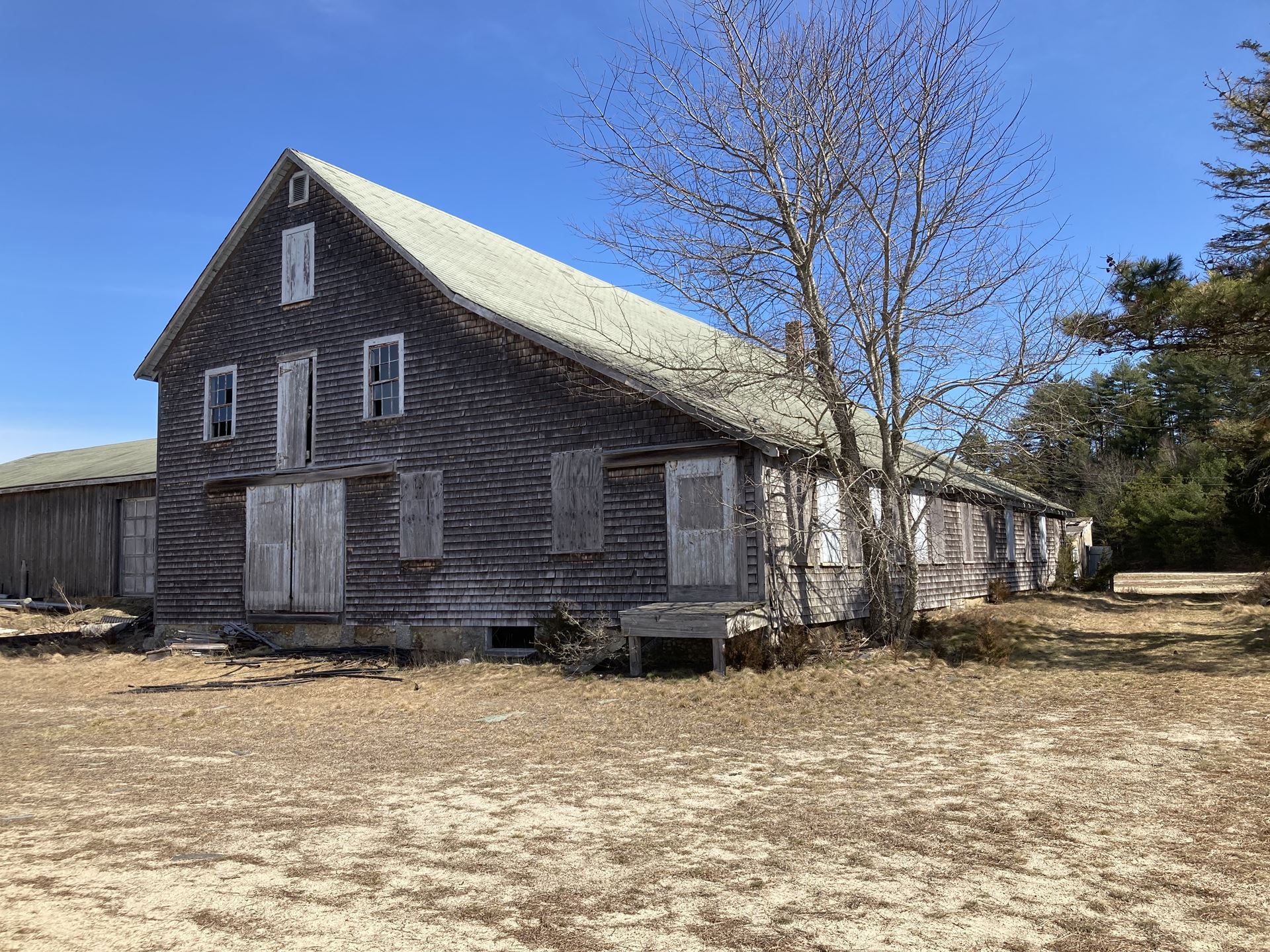On Thursday’s tour day, the Plymouth VAF conference will feature a fascinating tour of the region’s industry and culture organized and led by Sally McMurry, organizer of VAF’s 2004 conference in central Pennsylvania. “From Iron Bog to Cranberry Bog” will examine sites created by multiple occupants of this territory as they worked the natural wetlands and other landscape features. Bogs along the coast provided opportunities for the production of iron in the late 18th century (using “bog iron” created from oxidation in groundwater). After bog iron declined, the cranberry growers moved in. They fashioned a hydraulic landscape of carefully constructed bogs, dikes, ditches, flumes, and reservoirs.
 Wankincko Bog Screen House
Wankincko Bog Screen House
During the period when berries were marketed fresh (to about 1980), cranberry screenhouses provided distinctive spaces for processing and packing. Two Makepeace company sites represent large scale commercial production, while smaller properties owned by Finnish immigrants show how they integrated cranberries into diversified agricultural production. The Tremont Nail Works, a wonderful factory survivor from about 1850 in nearby Wareham, MA, shows how bog iron era skills were adapted to serve a niche market for custom nails.
.jpg) Tremont Nail Works
Tremont Nail Works
Also in Wareham, VAF members will visit the church of St. Patrick, a multiple building complex that reflects the changing history of the region’s workforce as Catholic immigrants from Ireland, Italy, Eastern Europe, and the Cape Verdean islands arrived to for industrial jobs. The tour will end the day at Oakdale Village, a century-old enclave of Cape Verdean culture. The “Bog” Tour promises to be another memorable trip into our fascinating vernacular past!
.jpeg) Hebron Chapel
Hebron Chapel
Submitted by James Buckley & Sally McMurray